- Home
- VAUDE Stories
- Know-how
- Flat pedals or clipless pedals - which is better for me?
Flat pedals or clipless pedals - which is better for me?
There are two types of pedals for cycling: Flat pedals and clipless pedals. Depending on which you choose, you will need different pedals and shoes. We'll explain what flat and clipless pedals are, the advantages and disadvantages of each and how to adjust your clipless shoes for the best fit. We would definitely recommend clipless pedals for one type of cycling.
What are flat pedals and clipless pedals?
What are clipless pedals?
With clipless pedals, the foot and pedals are connected so that cyclists can transfer their power from the foot to the pedals with as little loss as possible. Shoes for clipless pedals are equipped with a mount to which a metal or plastic plate is screwed. This engages in the pedal when you step on. To release the connection, the foot must be turned over the heel when dismounting.


A characteristic feature of road bike shoes is that the cleats are screwed under a smooth, extremely stiff sole, which makes walking difficult. In mountain bike shoes, on the other hand, the cleats are recessed and the sole is not quite as stiff, making it possible to walk when carrying. Basically, the stiffer the shoe sole, the better the power transfer to the pedals.
- Downieville Tech II mountain bike shoes€180.00Incl. VAT, plus shipping free delivery
With recycled PET bottles
- Moab syn. PRO All Mountain cycling shoes with click systemRating:100%€140.00Incl. VAT, plus shipping free delivery
With recycled material
- Moab Tech PRO All Mountain cycling shoes with click system€180.00Incl. VAT, plus shipping free delivery
With recycled material
- Kuro Mid STX cycling shoes€180.00Incl. VAT, plus shipping free delivery
Waterproof and breathable without PFC
- Pavei 2.0 STX Bike ShoesRating:60%€160.00Incl. VAT, plus shipping free delivery
Waterproof and breathable without PFC
- Pavei Mid Winter STX cycling shoeRating:100%€200.00Incl. VAT, plus shipping free delivery
Waterproof and breathable without PFC
- Pavei Tech Travel cycling shoes€160.00Incl. VAT, plus shipping free delivery
With recycled material
- Downieville Tech All Mountain Bike Shoes Men's€170.00 €119.00Incl. VAT, plus shipping free delivery
With recycled material
- Minaki Mid II STX cycling shoe€230.00Incl. VAT, plus shipping free delivery
Protects eco-friendly from rain - fully without PFC
-
- Downieville All Mountain Bike Shoes€130.00Incl. VAT, plus shipping free delivery
With recycled material
-
What are flat pedals?
Flat pedals are flat and have a large contact surface with short metal rods, the so-called pins. These attach to the sole of your shoe. However, there is no fixed connection - which has both advantages and disadvantages.
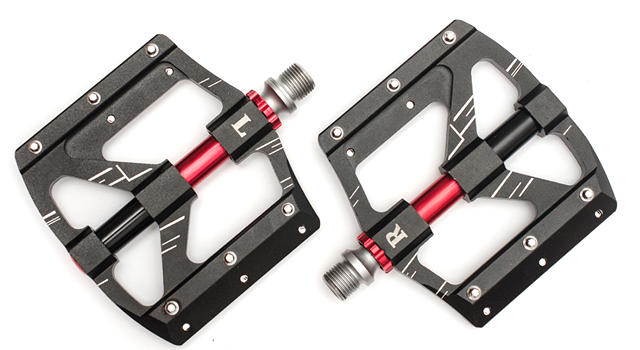

- Moab Tech II mountain bike shoes€170.00Incl. VAT, plus shipping free delivery
With recycled PET bottles
- Moab STX All Mountain bike shoesRating:100%€170.00Incl. VAT, plus shipping free delivery
Waterproof and breathable without PFC
- Moab syn. II All Mountain bike shoes women’s€130.00Incl. VAT, plus shipping free delivery
With recycled material
- Moab syn. II All Mountain bike shoes men’s€130.00Incl. VAT, plus shipping free delivery
With recycled material
- AM Moab Mid STX II cycling shoesRating:90%€210.00Incl. VAT, plus shipping free delivery
Certified leather
- AM Moab Mid mid-high cycling shoe€150.00 €105.00Incl. VAT, plus shipping free delivery
With recycled material
- AM Moab Mid winter STX cycling shoeRating:73%€230.00Incl. VAT, plus shipping free delivery
Waterproof and breathable without PFC
- Moab All Mountain Gravity cycling shoes women’s€130.00Incl. VAT, plus shipping free delivery
Certified leather
- AM Moab Gravity cycling shoes€130.00 €91.00Incl. VAT, plus shipping free delivery
Certified leather
- Moab Tech All Mountain Bike ShoesRating:90%€170.00 €119.00Incl. VAT, plus shipping free delivery
With recycled material
- Moab syn. All Mountain Bike Shoes Women's€130.00 €91.00Incl. VAT, plus shipping free delivery
PVC free material
- Moab All Mountain Bike ShoesRating:100%€150.00 €105.00Incl. VAT, plus shipping free delivery
Certified leather
Advantages and disadvantages of clipless and flat pedals
Advantages of clipless pedals
- Secure footing - you hardly ever slip off the pedal
- Optimum power transfer from the legs to the pedals
- Your feet are always in the optimum position
- You can also pull with your legs (round pedal stroke)
Advantages of flat pedals
- More feel on the pedals thanks to softer soles
- Foot position can be varied at any time
- Getting off the bike is always quicker and easier (especially in the event of a fall)
- Trains and promotes the rider's body tension in connection with their bike
- Flexible soles are more comfortable for walking in carrying passages
Disadvantages of clipless pedals
- Special shoes are necessary
- Time to get used to and practice are necessary
- Possible getting stuck in the pedal in the event of a fall
Disadvantages of flat pedals
- Reduced power transmission due to softer soles
- Pull phase during pedal rotations can no longer be used in the same way
Briefly summarized: The advantages of clipless pedals are the disadvantages of flat pedals - and vice versa. For road bikes, clipless pedals have clearly prevailed. Because there, of course, it is mainly about the greatest possible power transmission. If we go a little further off-road, i.e. on gravel bikes, it again depends on individual needs and types of use.
For mountain biking, flat pedals are often recommended for beginners. This way, they can learn techniques properly and don't have to worry about getting stuck in clipless pedals.
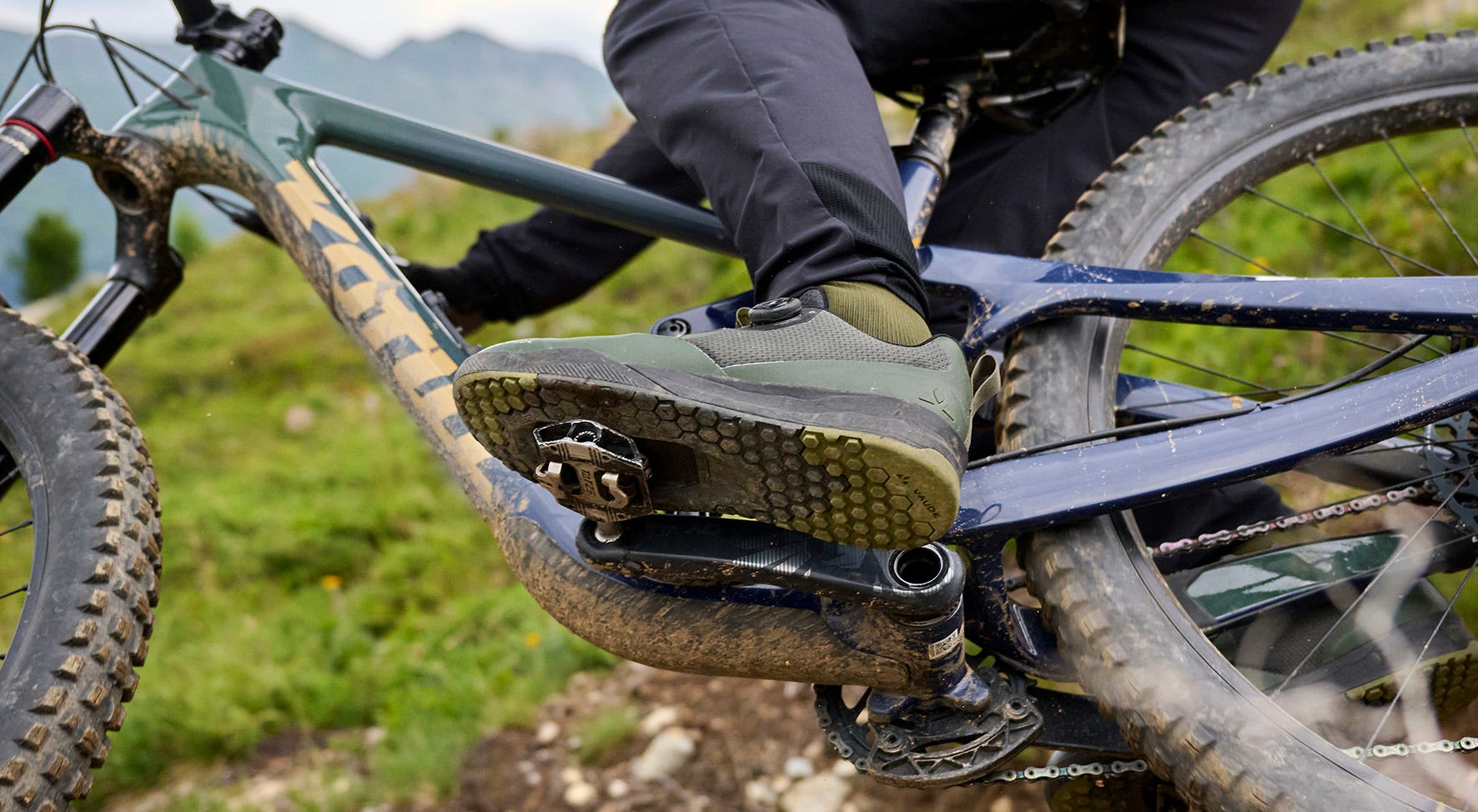

From flat to clipless: our Moab PRO mountain bike shoes
Originally, we equipped our Moab Pro shoes exclusively with soles for flat pedals. However, after we saw the need for MTB shoes for clipless pedals, we took another look. This is how the Moab PRO shoes came about.
As you can see in the graphic, we started with the normal sole and added the cleat mount (1). Behind it is an additional recess, the so-called cleat channel (2). If you are not clipped in, there is space for the clipless pedal so that you are still stable on the pedals.
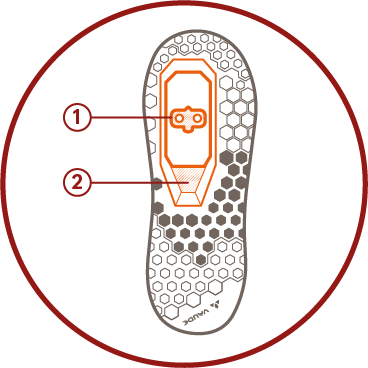

How to fit the cleats to your clipless shoes and adjust them
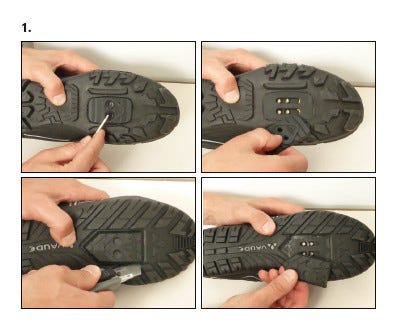

Clear the cleat area by loosening the screwed-on plate or cutting out the rubber wedge.
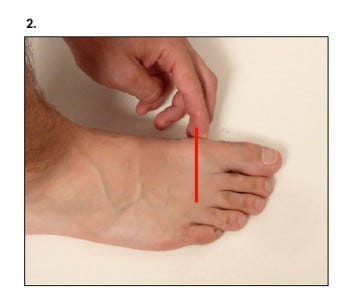

The position of the metatarsophalangeal joint is important for the correct position of the cleats. This is determined on the bare foot (see illustration). The position is marked on the skin.
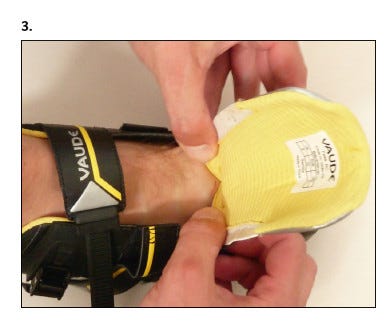

The best way to determine the ideal position of the cleats is to step into the shoe and push the sliding threaded plate in the outsole to approximately the height of the previously marked metatarsophalangeal joint. Then insert the cleats in the middle with the toe pointing forwards and tighten (max. torque 5 Nm).
- Pavei Mid Winter STX cycling shoeRating:100%€200.00Incl. VAT, plus shipping free delivery
Waterproof and breathable without PFC
- Downieville All Mountain Bike Shoes€130.00Incl. VAT, plus shipping free delivery
With recycled material
- AM Moab Gravity cycling shoes€130.00 €91.00Incl. VAT, plus shipping free delivery
Certified leather
- Moab Tech All Mountain Bike ShoesRating:90%€170.00 €119.00Incl. VAT, plus shipping free delivery
With recycled material
- Moab Tech II mountain bike shoes€170.00Incl. VAT, plus shipping free delivery
With recycled PET bottles
- Asfalt Dualflex winter STX cycling shoes commuting€220.00Incl. VAT, plus shipping free delivery
Waterproof and breathable without PFC
-
- Downieville Tech II mountain bike shoes€180.00Incl. VAT, plus shipping free delivery
With recycled PET bottles
- Moab All Mountain Gravity cycling shoes women’s€130.00Incl. VAT, plus shipping free delivery
Certified leather
- Pavei 2.0 STX Bike ShoesRating:60%€160.00Incl. VAT, plus shipping free delivery
Waterproof and breathable without PFC
- Kuro Mid STX cycling shoes€180.00Incl. VAT, plus shipping free delivery
Waterproof and breathable without PFC
- AM Moab Mid mid-high cycling shoe€150.00 €105.00Incl. VAT, plus shipping free delivery
With recycled material
- AM Moab Mid winter STX cycling shoeRating:73%€230.00Incl. VAT, plus shipping free delivery
Waterproof and breathable without PFC
- Moab Tech PRO All Mountain cycling shoes with click system€180.00Incl. VAT, plus shipping free delivery
With recycled material


